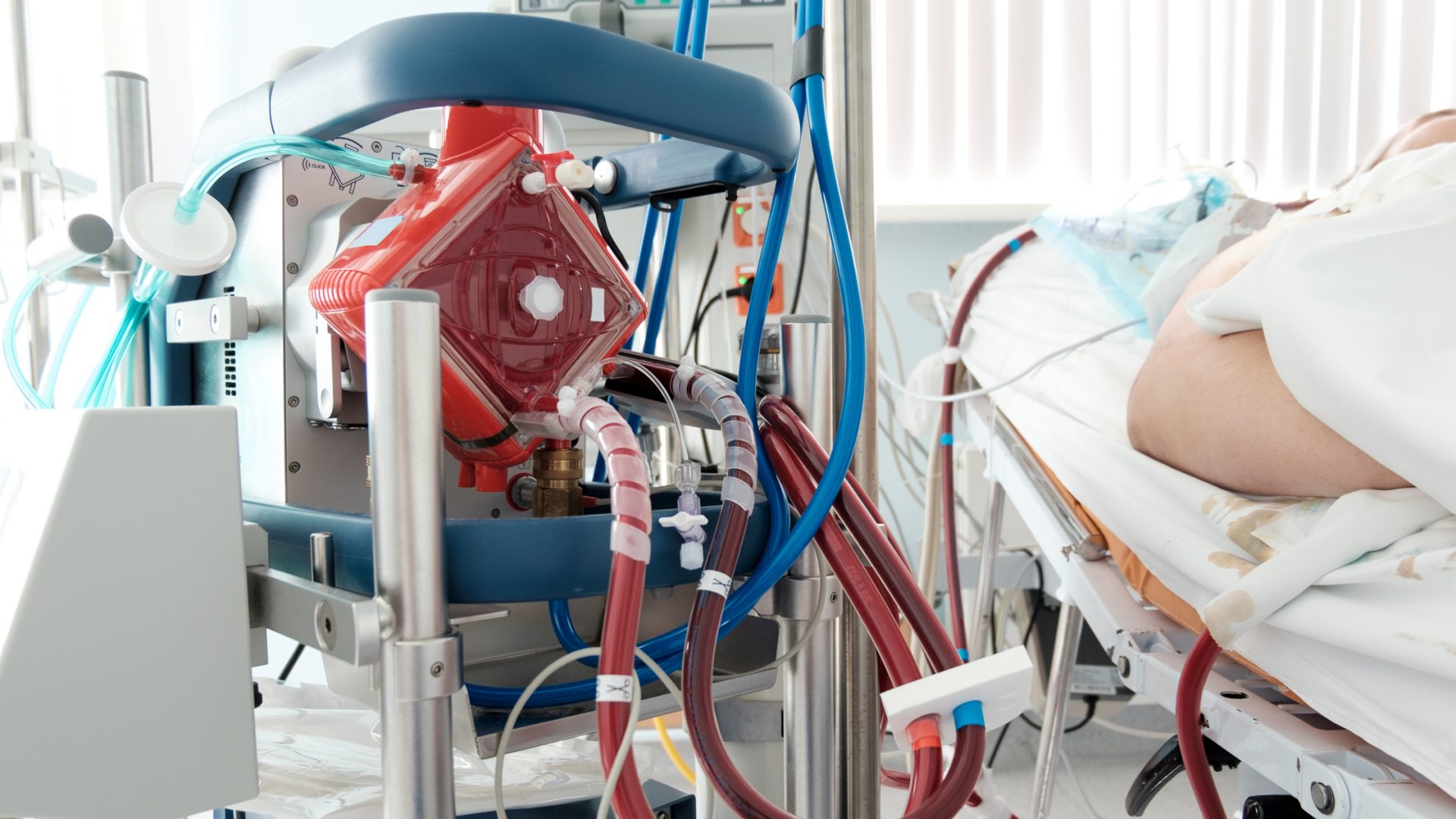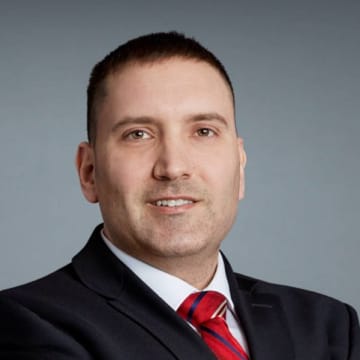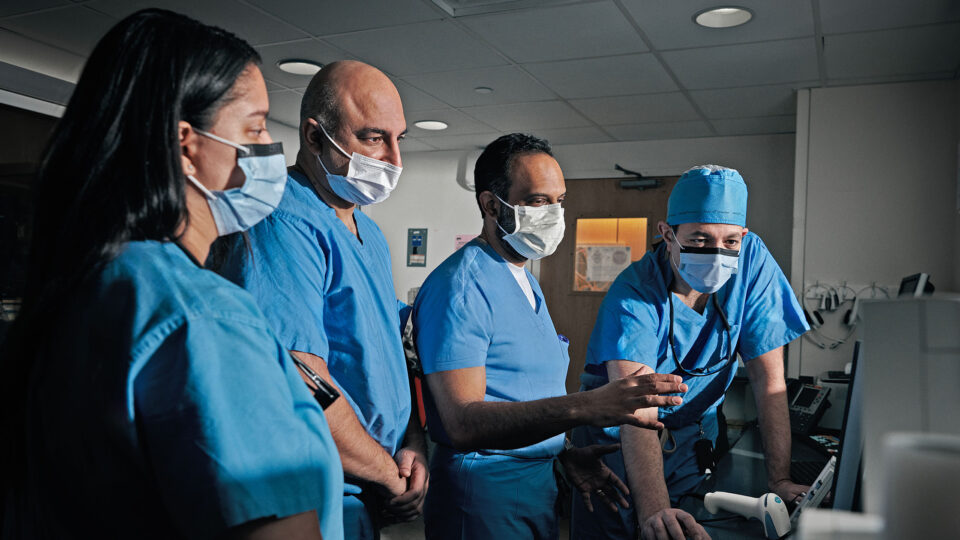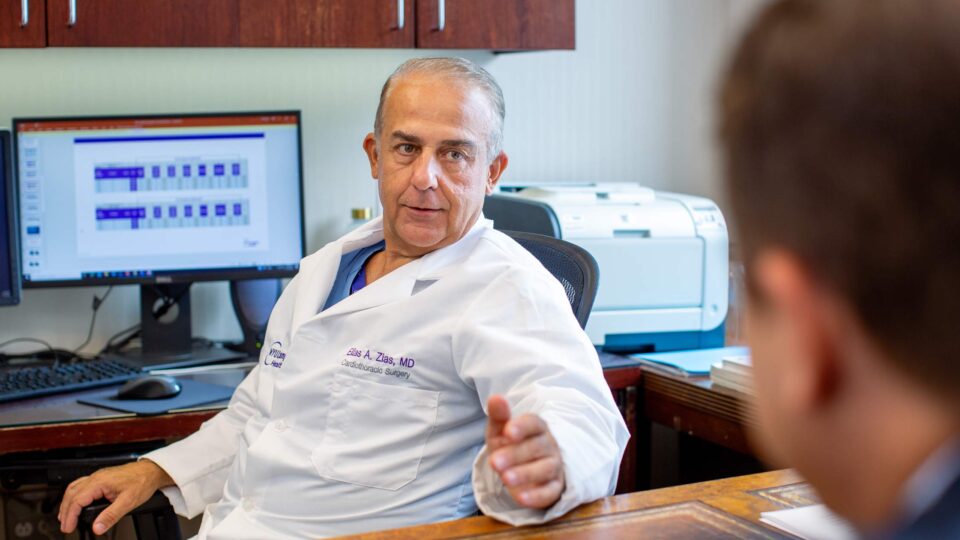Patients with severe COVID-19 who were supported with venovenous extracorporeal membrane oxygenation (VV-ECMO) experienced high rates of lung recovery and noteworthy long-term outcomes at one year, according to research published in The Annals of Thoracic Surgery.
Of 415 patients with confirmed COVID-19 admitted to the ICU at NYU Langone Health between March 10 and May 1, 2020, a multidisciplinary ECMO team selected 30 patients for VV-ECMO. Of those selected, 93.3 percent survived to discharge either to home or to acute rehabilitation.
At a follow-up of nearly one year, 86.7 percent of those treated with ECMO were surviving, including one patient who underwent lung transplantation.
“Our work suggests that with appropriately selected patients and aggressive management strategies, the use of ECMO support for severe COVID-19 can result in exceptional survival,” says Deane E. Smith, MD, an associate professor in the Department of Cardiothoracic Surgery. “These patients who leave the hospital without the need for oxygen therapy are very likely to remain alive and well one year later.”
“With appropriately selected patients and aggressive management strategies, the use of ECMO support for severe COVID-19 can result in exceptional survival.”
Deane E. Smith, MD.
Minimizing Ventilator Damage
Most of the patients admitted to the ICU —77.8 percent—were intubated for mechanical ventilatory support. While conventional mechanical ventilation in COVID-19 has been associated with mortality greater than 50 percent, in some cases VV-ECMO may result in decreased ventilator support, minimizing damage to the lungs and allowing them to begin healing.
“These patients received ECMO for severe COVID-19 during the height of the pandemic in New York City—at a time when very little was known about the likelihood for success,” Dr. Smith notes.
The VV-ECMO patients were hospitalized for a median of 45 days and supported on ECMO for a median of 19 days. Results were encouraging: no patients left the hospital ventilator dependent, and only one patient required supplemental oxygen.
Value of Patient Selection and Standardized Approach
Patient selection was a significant factor in the success of VV-ECMO, according to Dr. Smith.
“We were struck by the number of young, otherwise healthy patients who were dying from the disease. We felt patient selection was very important,” he says.
The technology was not considered a “bailout” or salvage therapy but was offered to patients believed to have a reasonable chance for survival.
“We did not feel that using ECMO to have patients survive simply to go to long-term facilities debilitated and ventilator-dependent was successful,” Dr. Smith adds. “We believed that we could protect the lungs and allow patients to return to their normal lives at the end of it.”
A standardized approach to patient management and lung protection was equally valuable. The protocol included not deviating from lung protective ventilation strategies, early tracheostomy and frequent bronchoscopy, treatment of coinfection, and standardization of an anticoagulation regimen.
Additionally, to help improve oxygenation, the team frequently positioned patients who were not recovering as quickly as expected in a prone position.
“Most of these things, such as bronchoscopy or tracheostomy, were not considered safe in patients with COVID-19 at the start of the pandemic,” Dr. Smith says. “Our team was aggressive with these interventions much earlier than most hospitals.”
Follow-up and Recovery
Even in the patient who went on to require lung transplantation, the research team concluded that a period of rehabilitation was important to facilitate quicker recovery from his transplant surgery.
“We learned that lung recovery is possible. When the pandemic started, that was not clear,” Dr. Smith says.






